Artificial Intelligence and Machine Learning
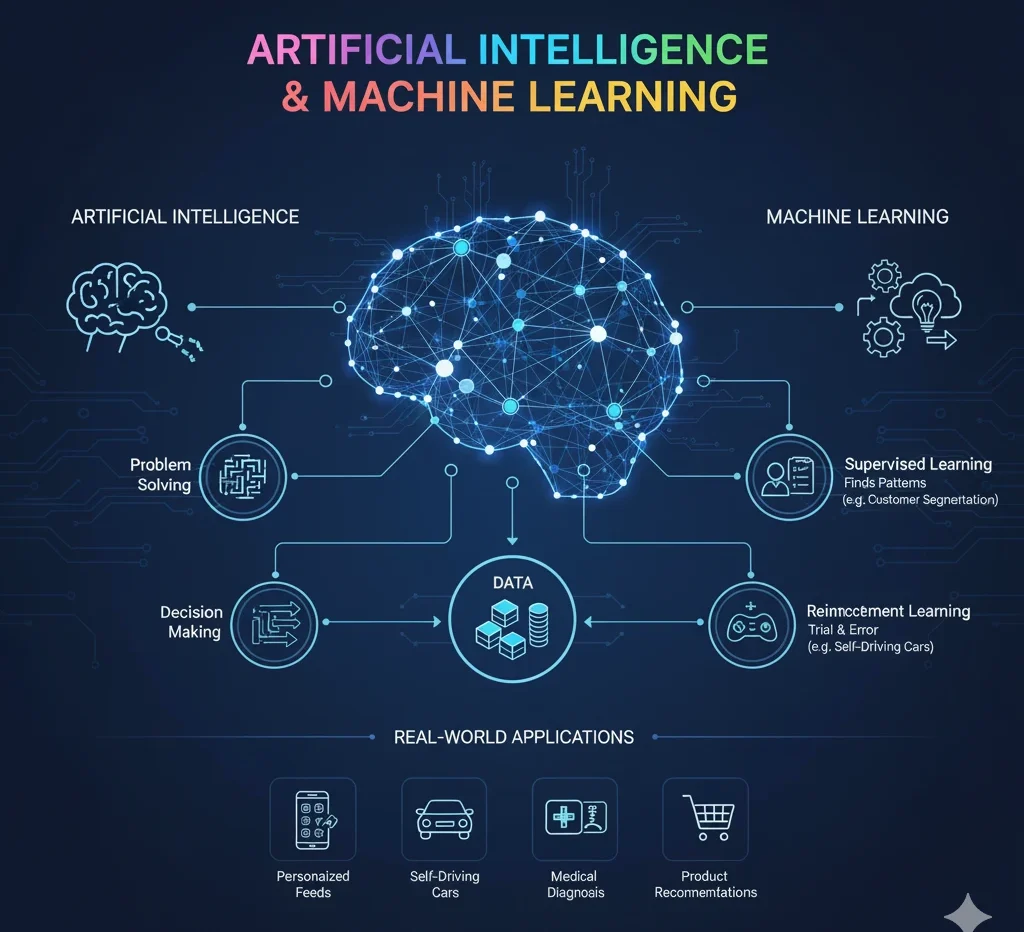
To be honest, if you look around today, it’s kind of amazing how much technology has changed our lives. A lot of that change comes from two things people keep talking about: Artificial Intelligence (AI) and Machine Learning (ML). People sometimes mix them up, but they’re a bit different. AI is the big idea—making machines act smart—while ML is one way to actually get there, by letting machines learn from data. Honestly, both are shaping the world in ways we probably wouldn’t have imagined even twenty years ago.
What Artificial Intelligence Really Means
AI is basically about teaching machines to do tasks that usually need human brains. Not just calculations, but things like solving problems, spotting patterns, or making decisions. For example, when I ask Google Maps for directions and it instantly tells me the fastest route while avoiding traffic, that’s AI. And when Netflix recommends a series I actually enjoy, that’s AI too.
Older AI was really rigid. It followed rules: if this happens, then do that. Now, it’s more flexible. AI can adjust, respond, and even “learn.” That’s why we have self-driving cars, chatbots that understand what you’re asking, and medical tools that sometimes spot diseases before doctors do. Honestly, it’s kind of amazing when you think about it. It shows that technology isn’t just smart—it’s learning, in a way that feels almost human.
Machine Learning: The Core of AI
Machine Learning is like the engine behind AI. Instead of programming every single rule, we give the computer lots of data, and it figures out patterns on its own. It’s kind of like how kids learn. Show them enough pictures of cats and dogs, and eventually they’ll get it without you explaining every little detail.
There are three main ways machines learn:
Supervised Learning – You train it with labeled data, like showing it which emails are spam and which aren’t.
Unsupervised Learning – No labels here. The system just tries to organize or group data. Shops use this to figure out which customers behave similarly.
Reinforcement Learning – Learning by trial and error. The machine gets rewards for doing something right and penalties for mistakes. Self-driving cars or AI playing video games often use this method.
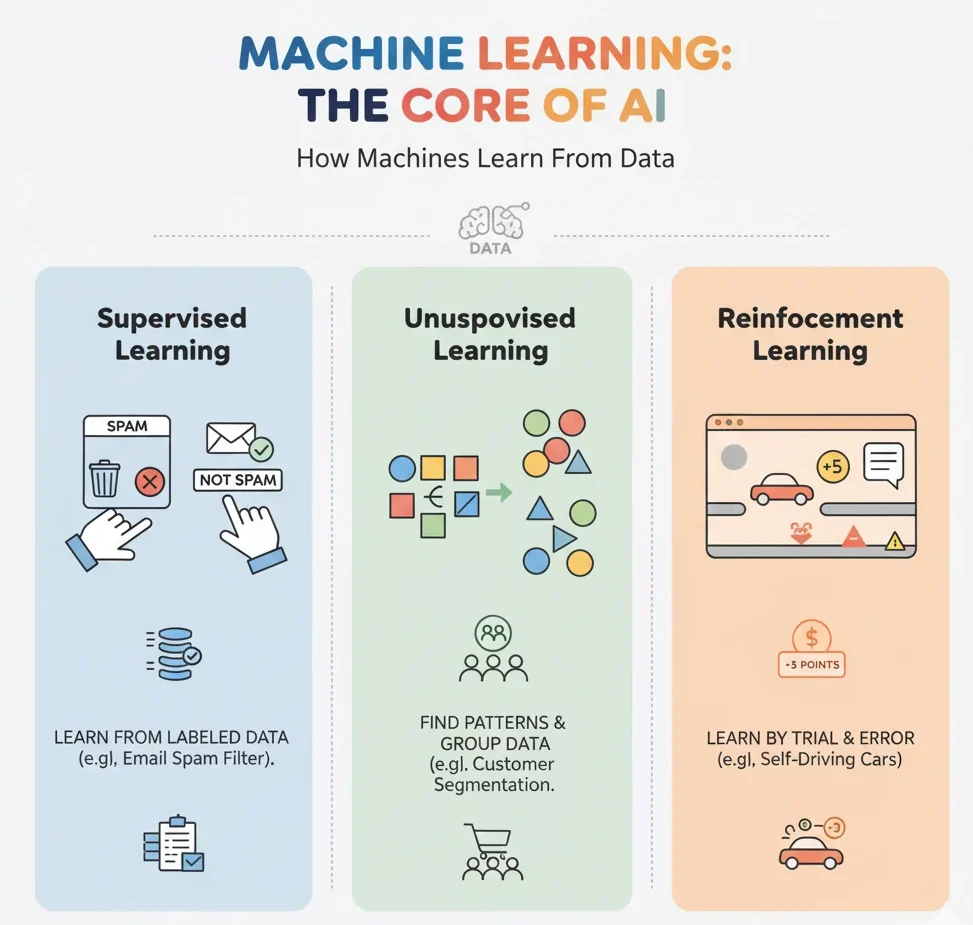
Where We See AI and ML Daily
It’s funny how we all use AI and ML every day without really noticing it. Scrolling through Instagram? Your feed is sorted by an algorithm. Shopping on Amazon? Those product recommendations? That’s ML. Even your phone keyboard predicting your next word—that’s AI at work.
But it’s not just apps. Banks use ML to detect fraud. Hospitals use AI to read X-rays. Farmers use it to predict crop yields. And in classrooms, some learning apps adjust lessons depending on what a student struggles with. Honestly, it’s kind of everywhere, and sometimes we don’t even realize it.
Why They Matter
People get excited about AI and ML for a simple reason—they save time and get things done more accurately. A computer can go through thousands of reports or medical scans in seconds. Humans just can’t match that. Plus, they take over boring, repetitive tasks. Honestly, no one enjoys data entry, and AI can handle that while people focus on more creative or complex work.
Another big thing is scalability. Once an AI system is trained, you can use it anywhere. That’s why even small businesses are using it. It helps them compete with bigger companies without needing massive resources, which is kind of exciting when you think about it.
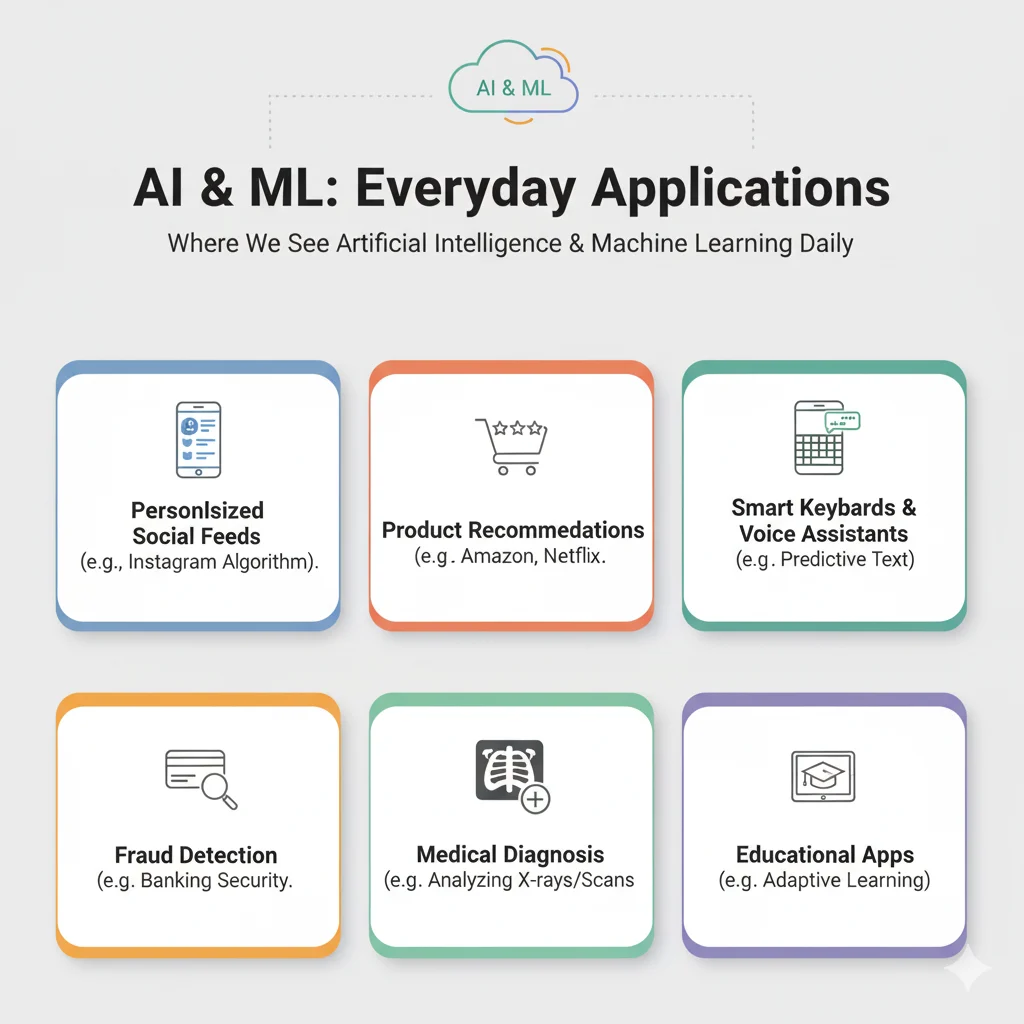
The Downsides
Still, AI isn’t perfect. Bias is a big problem. If the data has bias, the AI will pick that up too. Like, imagine a hiring program mostly trained on male resumes—it could end up rejecting female candidates without even realizing it. Honestly, that’s kind of worrying, you know?
Privacy is another thing people worry about. These systems need personal data, and honestly, it makes a lot of us nervous about where that info goes and who can see it. Then there’s the job question. Some roles might disappear as automation grows. Sure, new jobs might pop up, but people will have to learn new skills, which isn’t always easy—or fun, really.
The Road Ahead
Looking ahead, it’s pretty clear that AI and ML are only going to keep growing. They could help fight climate change, improve healthcare around the world, or make education easier to access. But with all that hype, there’s definitely a need for rules and ethics. Otherwise, the risks could end up being just as big as the benefits, I guess.
At the end of the day, I don’t see AI replacing people. It works best as a partner—machines handle the fast, repetitive stuff, and humans bring creativity and judgment. When both work together, that’s when real progress happens. And honestly, that’s the future I’d like to see.
Conclusion: The Changing Role of AI and ML
AI and ML… well, they’re already here in daily life. Not just in tech stuff, but in small things too. Like, you open Netflix, boom—it knows what you might watch. Or a hospital system pulling data to help doctors. AI is the big picture, making machines act smart. ML is kinda the way it happens, where systems pick up patterns from the data.
The good part? They’re fast. Really fast. They crunch through loads of info, find links people just wouldn’t notice, and handle all the boring repeat work. Saves time, saves effort. Feels like a win.
But, yeah, not perfect. If your data has problems, the output will too. Privacy is a whole other mess—who owns the info, who’s watching it? And then the job worries… not exactly small. That’s why we need rules, proper checks, a bit of common sense, honestly.
I don’t think AI and ML replace people, though. It’s more teamwork. Machines do the heavy lifting, humans bring creativity and judgement (and maybe a bit of heart too). That’s where the real progress sits—tech backing us up instead of pushing us out. Kind of the future we actually want.
For more in-depth information on the foundational elements that make databases so effective, explore our article on Database Characteristics.
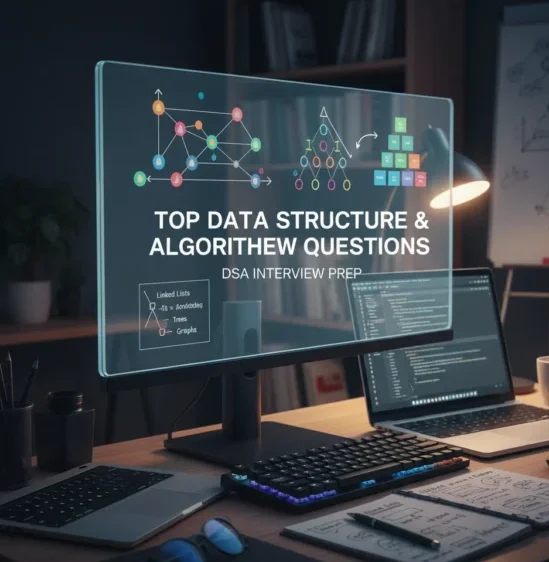
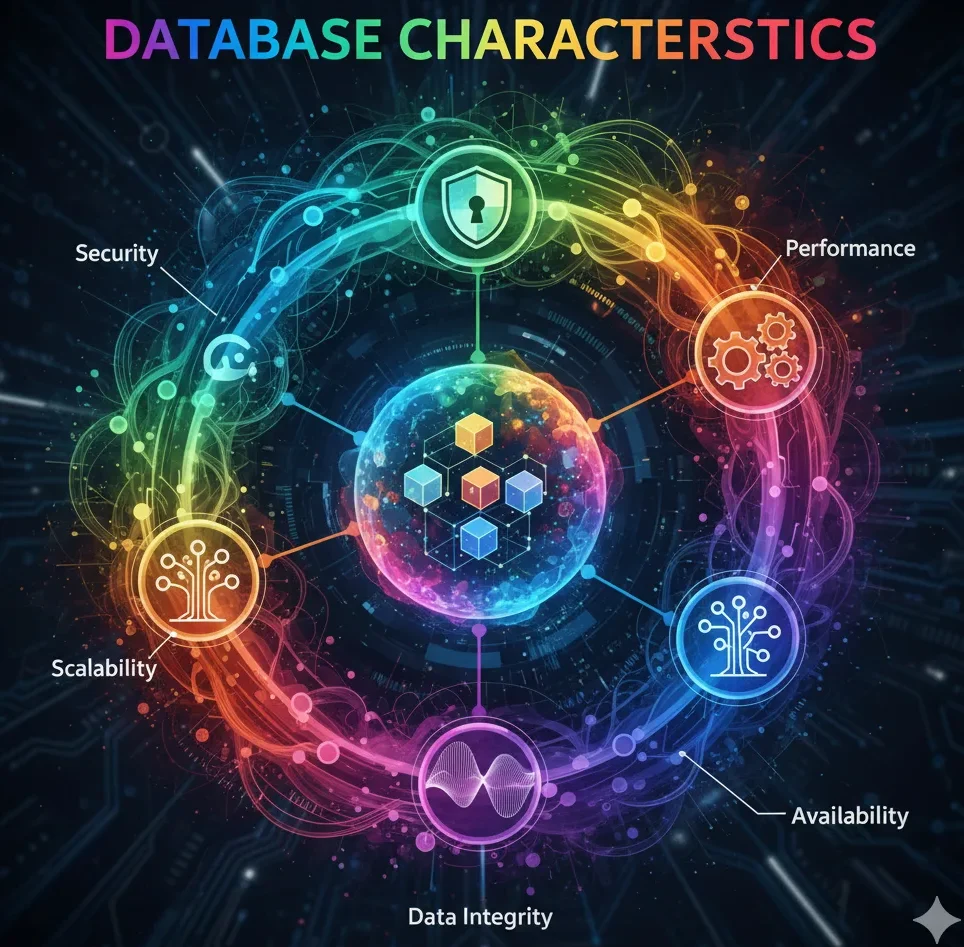
One thought on “Artificial Intelligence and Machine Learning”